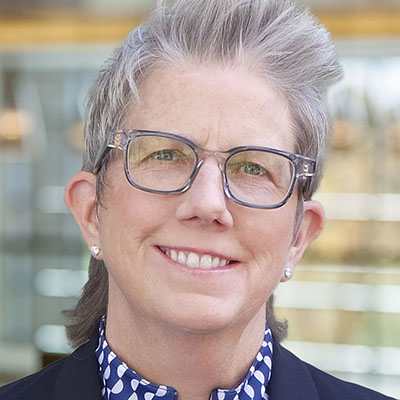Episode 57: Yarun Nahar on Prioritizing the Long-Term Health of the Sales Org
6.8K Views | 17 Min Read
Shawnna Sumaoang: Hi and welcome to the Sales Enablement PRO podcast. I am Shawnna Sumaoang. Sales enablement is a constantly evolving space, and we’re here to help professionals stay up to date on the latest trends and best practices so they can be more effective in their jobs.
Today, I’m excited to have Yarun Nahar, the senior manager of sales enablement at Rackspace, join us. Yarun, I’d love for you to just introduce yourself, your title, and your organization.
Yarun Nahar: Sure. Hi, everyone. My name is Yarun Nahar, and I head up sales enablement across EMEA at a company called Rackspace.
SS: We’re really excited to have you here with us today. In fact, I saw you speak at a sales enablement event recently. During a panel, you mentioned that it’s important for sales enablement professionals to focus on three things at any given point in time and really communicate those priorities.
Why, from your perspective, is prioritization important for sales enablement?
YN: Sure. Right now, enablement is a buzzword. It’s used loosely across businesses to mean literally anything that supports the sales process. I believe because of this, more and more sales enablers that I speak to are quickly driven into tactical, operational BAU type activities, which means you get super busy, super fast.
So, soon enough, the business is asking, what impact has enablement had on the business? All you can really do is produce a sheet full of training sessions. And I actually had one of our leaders tell us this exact story from a previous company that they’ve worked in. So, this is why prioritization, in my view, is key to keep yourself relevant and focused on strategic sales enablement initiatives that really move the needle on key metrics rather than becoming the sort of catch-all for anything training related.
Secondly, I would say in my experience, sales enablement teams are often small. They’re not huge teams, and sometimes even individual contributors. So, it becomes even more important to just push back, prioritize and stay focused. I say if the business wants your list of priorities to increase, make sure the headcount comes with it.
SS: Oh, absolutely. Resources must come along with that. So how do you go about determining what your priorities should be and what advice do you have for others to identify what their own priorities should be within the organization?
YN: I think that’s pretty simple. What’s going to make the biggest impact on the key metrics your business is trying to achieve? When I say that, usually I get a pretty large yearly revenue number. That’s not what I’m talking about. We all know that’s what we’re aiming for. But this is where you will need to push your sales leadership team, managing directors, even some of the senior leadership team to tell you where they think that money is going to come from and base your priorities around there.
For example, if part of hitting the revenue target is to grow the sales team by X amount, you might want to focus your sales enablement priorities on anything that will ensure your new hires are successful and productive quickly, for example, through an effective sales onboarding program. This was one of my key priorities and first priorities when I joined Rackspace. If your company is placing big bets on a specific product or service area, for example, you may want to prioritize your sales enablement around closed-loop sales enablement strategies that will drive business in that specific product or service area.
There’s no such thing, I believe, as your own priorities or just sales enablement priorities. One of the most important things to do is to make sure that whatever you prioritize is shared, agreed, and aligned with the sales leadership team and even the senior leadership team.
SS: You mentioned this on the onset of the call, but a lot of sales enablement functions, especially those that are slightly less mature, they really struggle to move from being a tactical function to a strategic one. How can sales enablement professionals help transform their function from tactical to strategic?
YN: That’s a really good one, and I get that a lot. Firstly, if you’re a small team, the first thing I’d say is consciously pull yourself away from tactical BAU activities that don’t add value. You simply can’t afford to do this and the business won’t break if you don’t. So that’s the first thing to do.
And when you join a new company and you’re joining a new sales enablement function or building one, the immediate thought is to get busy fast. Try and steer clear from doing that. Quite quickly, you’ll be doing tactical, BAU type activities that in the end, don’t really move the needle on any of the key metrics. So, that’s number one.
Secondly, I’d say typically, if we think about businesses today, everybody’s thinking about today, tomorrow, and this week. I believe our job as sales enablement partners is to step out of the daily operations and drive long-term thinking about the health of the sales force within your business. By that, I don’t mean don’t do anything for 12 months. It just means do things with the mindset that they’ll have a greater impact on the health of the sales force in the coming quarters, the next year, and the year after. So, whenever you’re sitting down with your VP and they’re thinking about today, tomorrow, and this week, I believe our job as sales enablers is to show them that we have a bright future. That’s what I would say, keep the long-term hat on.
And then finally, align your strategic initiatives to business goals and take a holistic approach. So, if you can’t map exactly what you’re doing in terms of enablement directly back to a strategic initiative for the company, you’re more likely getting into the tactical catch-all space.
And secondly, by taking a holistic approach, you’re thinking outside of the role of sales enablement as it’s defined today. So, I really see sales enablers as the change agents in a sales organization, which typically means having to influence and direct different functions to support your end goal. So, if you find that you’re bringing in multiple functions to drive a specific sales enablement initiative, it’s probably more likely a strategic one than tactical.
SS: I love that angle and thinking about it in that way. I think you’re absolutely right. One of sales enablement’s primary roles and responsibilities is to be a change agent.
I want to pivot just slightly and talk about the importance of measuring the business impact of sales enablement. I know that this is a topic that you’ve been passionate about. From your perspective, what are some of the key metrics that you track to demonstrate sales enablement success?
YN: That’s always a tough one, and another question that I get frequently. Whenever we’re in sales enablement gatherings, it’s one of the key topics that keeps coming up again and again. That’s because there are so many metrics that you can measure. You’ve got to be really careful that you don’t end up measuring something that in the end, doesn’t really tell you anything. So, be really careful about that.
Secondly, be aware of becoming a sales enabler who thinks their remit stops at, “we’ve trained the sellers.” If you’re falling into that group, and that’s fine. We know we need sales trainers, but if you want to think strategically about sales enablement, we need to step out of that and take some more accountability and responsibility to support the overall number the business is trying to drive.
So again, I don’t mean the yearly revenue number, we all know we need to hit that. I’m talking about specific areas, big bets that requires strategic sales enablement. So, the first thing to do when thinking metrics is to sit them down, and this is your sales leadership team, and agree on what those priorities are and what metrics we’re going to be using to measure those priorities. You’ll typically find that a lot of sales leaders actually don’t know. This is where, again, as sales enablement partners, it’s our responsibility to sort of share best practice on that and some of the things that could work, share ideas, and make sure that we’re getting our sales leaders to, again, think long-term.
And the way I do this is I typically categorize all my enablement metrics into three key areas. The first one that I look at is what I call a training-enablement metric. Typically, we see in sales functions, this is the one thing that we do measure well, and consistently as well. By this, I mean have they learned the scale, the process, the tool, or knowledge you’ve tried to embed in the sales org? That’s the first metric.
The second one is more of an activity-trending metric. And these are basically leading indications that the new initiative or whatever you’ve tried to implement or embed is actually working.
And the final metrics should be what I call a money metric. It’s a bottom-line metric, which should be around a revenue number or pipeline. So, how much has this initiative contributed to the bottom line.
An example of this, and one of the ways I’ve done this at Rackspace, is one of the initiatives that we had is to enable proactive prospecting and accelerate pipeline across ourselves floor. I recently introduced a new system to the business to enable our sellers to do that. And the way we’re measuring the success of this is through those three metrics. So, the first one around the training enablement metric is a measurement of adoption of the system. Are they actually logging in? Are they actually using the system? The second one is an activity metric. So, here we’re looking at the number of new logo meetings. For example, our sellers are going to tell me that this new system is really working in terms of helping us open doors. And the final one is a money metric, which is where we measure the amount of pipeline we’ve generated as a result of using this new system.
That’s just an example of how you can take an enablement initiative and really break the metrics down into those three areas. And what that helps you do is to see where you might be going wrong. So, for example, if you’re finding that your sellers are actually using the system, they’re generating those meetings. But actually, we’re not getting the revenue pipeline. It might not be a system error. Actually, that might be something more to do with the sales process. It might be a sales skills gap. So, when you start breaking down metrics, it helps you really understand where your initiatives might be failing as well.
SS: I love that. And thank you for providing such a concrete example for our audience. I’d like to dive a little bit into tactics for just a moment. How have you gone about actually gathering some of those insights and analytics?
YN: At the moment, there’s a lot of manual efforts. It’s just the way it is to gather the insights and the analytics that we need in sales enablement. So this may come in the form of surveys, pulling reports through Salesforce. However, now more and more, I am leveraging our sales operations team who, if you have one within your sales function, which most organizations do, should be able to help you build a system for keeping on top of the metric you’re measuring.
It’s hard enough to drive all the initiatives, the activity, pulling together all the relevant people to make initiatives work. You don’t want measuring the actual initiative to be one of them. So, really leverage your sales ops team if you have one, to help you understand how you can measure this metric consistently.
SS: I think that’s fantastic. And you mentioned earlier that a lot of the more strategic initiatives for sales enablement are going to have a lot of cross-functional partners. So how have you worked with partners to measure the success of your sales enablement efforts?
YN: I’d say it’s various. It really depends on what the initiative is. Like I said, I worked directly with the sales ops team who helped me with getting a lot of that data that I need to understand how our enablement initiatives and strategies are working or even not working. So, definitely the sales ops team, but also the individual product teams. For example, if we’re trying to drive revenue in a specific product area, then I would partner with the specific product team to make sure that we have aligned metrics on that specific product. Also, sort of working with them to make sure we’re measuring success consistently.
Then, really SMEs for specific initiatives that you’re driving. Ideally, if you’re really wanting to drive strategic sales enablement, I believe every mature sales enablement team should have a dedicated analyst consistently looking at enablement metrics, trending metrics, and just ensuring that enablement initiatives are doing what they set out to do.
SS: That’s fantastic. And in closing, how do you go about communicating the business impact of sales enablement, back up to your stakeholders?
YN: In a word, regularly. So, it’s really important not to make sales enablement a mystery. When I join organizations, so often, I see that the sales leadership team are thinking about, again, today, tomorrow, and the week. And it’s really difficult to get them to focus on the long-term health of the sales organization when we’ve got pressing numbers that we’ve got to hit this month and this quarter.
What I would say is that as a sales partner, sometimes you’ll find that you need to actually push your sales leaders to actively be involved and really take part in the initiatives. The way to do that is to regularly make sure you’re updating them on those key initiatives and how they’re progressing, because a lot of the initiatives that we drive in sales enablement generally tend to be longer term, I’d say mid to longer term. Don’t wait until you’ve achieved the results or any sort of result to communicate back to the sales leadership team. Always communicate progress, trending metrics, any indication that what you’re trying to drive is having a positive and the right impact.
So, I would say just make it regular, make it consistent. And when you’re in that meeting, make sure that anything that you’re communicating is driven back to a strategic business initiative and the priorities and the metrics that you agreed on during the beginning of actually planning your sales agenda.
SS: I love that. That’s perfect. Thank you so much for joining us today. I really appreciated the chance to chat with you.
YN: No problem. I really enjoyed it too.
SS: To our audience, thanks for listening. For more insights, tips, and expertise from sales enablement leaders, visit salesenablement.pro. If there’s something you’d like to share or a topic you’d like to learn more about, please let us know. We’d love to hear from you.












